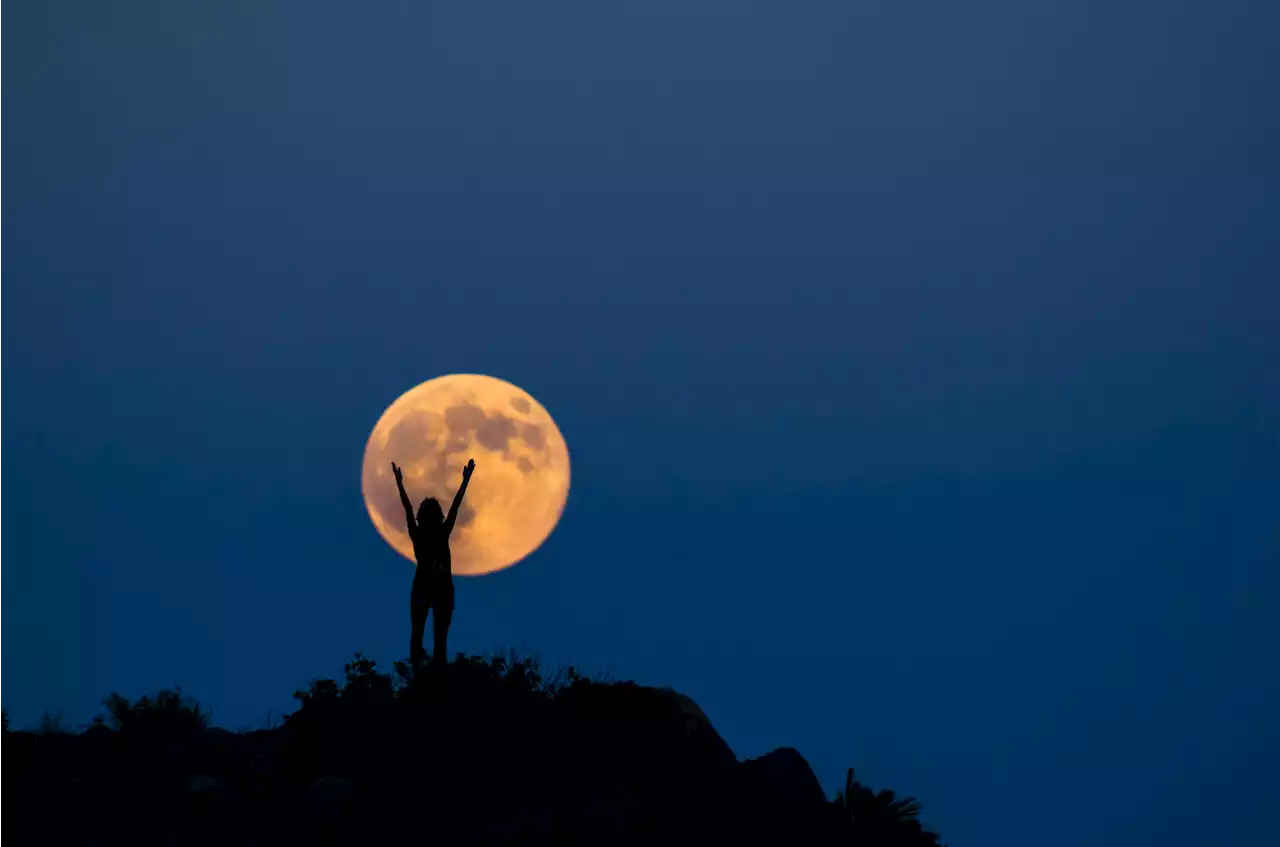Ancient Mars may have had an environment capable of harboring an underground world teeming with microscopic organisms.
may have had an environment capable of harboring an underground world teeming with microscopic organisms, French scientists reported Monday.
The results "are a bit gloomy, but I think they are also very stimulating.," he said in an email. "They challenge us to rethink the way a biosphere and its planet interact."In a study in the journal Nature Astronomy Early Mars’ presumably moist, warm climate, however, would have been jeopardized by so much hydrogen sucked out of the thin, carbon dioxide-rich atmosphere, Sauterey said. As temperatures plunged by nearly minus-400 degrees Fahrenheit , any organisms at or near the surface likely would have buried deeper in an attempt to survive.
Pahlevan led a separate recent study suggesting Mars was born wet with warm oceans lasting millions of years. The atmosphere would have been dense and mostly hydrogen back then, serving as a heat-trapping greenhouse gas that eventually was transported to higher altitudes and lost to space, his team concluded.
United States Latest News, United States Headlines
Similar News:You can also read news stories similar to this one that we have collected from other news sources.
 Underground microbes may have swarmed ancient MarsCAPE CANAVERAL, Fla. (AP) — Ancient Mars may have had an environment capable of harboring an underground world teeming with microscopic organisms, French scientists reported Monday. But if they existed, these simple life forms would have altered the atmosphere so profoundly that they triggered a Martian Ice Age and snuffed themselves out, the researchers concluded.
Underground microbes may have swarmed ancient MarsCAPE CANAVERAL, Fla. (AP) — Ancient Mars may have had an environment capable of harboring an underground world teeming with microscopic organisms, French scientists reported Monday. But if they existed, these simple life forms would have altered the atmosphere so profoundly that they triggered a Martian Ice Age and snuffed themselves out, the researchers concluded.
Read more »
 Ancient Mars microbes triggered climate change that made it hard for them to surviveTereza is a London-based science and technology journalist, aspiring fiction writer and amateur gymnast. Originally from Prague, the Czech Republic, she spent the first seven years of her career working as a reporter, script-writer and presenter for various TV programmes of the Czech Public Service Television. She later took a career break to pursue further education and added a Master's in Science from the International Space University, France, to her Bachelor's in Journalism and Master's in Cultural Anthropology from Prague's Charles University. She worked as a reporter at the Engineering and Technology magazine, freelanced for a range of publications including Live Science, Space.com, Professional Engineering, Via Satellite and Space News and served as a maternity cover science editor at the European Space Agency.
Ancient Mars microbes triggered climate change that made it hard for them to surviveTereza is a London-based science and technology journalist, aspiring fiction writer and amateur gymnast. Originally from Prague, the Czech Republic, she spent the first seven years of her career working as a reporter, script-writer and presenter for various TV programmes of the Czech Public Service Television. She later took a career break to pursue further education and added a Master's in Science from the International Space University, France, to her Bachelor's in Journalism and Master's in Cultural Anthropology from Prague's Charles University. She worked as a reporter at the Engineering and Technology magazine, freelanced for a range of publications including Live Science, Space.com, Professional Engineering, Via Satellite and Space News and served as a maternity cover science editor at the European Space Agency.
Read more »
 See A Beautiful ‘Hunter’s Moon’ Cruise Past Mars: The Naked Eye Night Sky This WeekLet's go stargazing! The northern hemisphere’s celestial highlights (mid-northern latitudes) for the week ahead.
See A Beautiful ‘Hunter’s Moon’ Cruise Past Mars: The Naked Eye Night Sky This WeekLet's go stargazing! The northern hemisphere’s celestial highlights (mid-northern latitudes) for the week ahead.
Read more »
 Early Mars habitability and global cooling by H2-based methanogens - Nature AstronomyEarly Martian surface and subsurface were probably habitable for methanogenic microorganisms with a hydrogen-based metabolism, according to an ecological model coupled with a geochemical simulation. Feedback effects of such a biosphere on the atmosphere might have driven strong global cooling.
Early Mars habitability and global cooling by H2-based methanogens - Nature AstronomyEarly Martian surface and subsurface were probably habitable for methanogenic microorganisms with a hydrogen-based metabolism, according to an ecological model coupled with a geochemical simulation. Feedback effects of such a biosphere on the atmosphere might have driven strong global cooling.
Read more »
